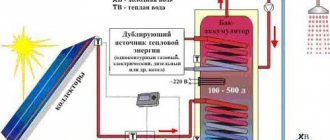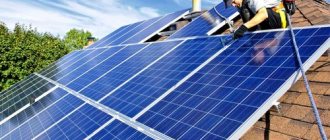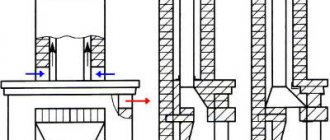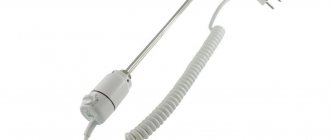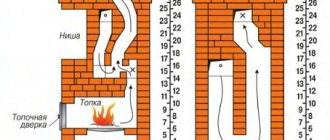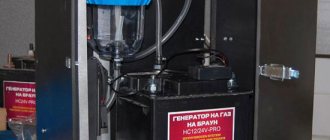01/26/2017 master
Recently, non-traditional methods of heating rooms have become increasingly relevant. People are striving to find a more efficient and cheaper way to heat their homes. One such method is to use solar energy.
Solar heating for home
Today, special collectors are used to transform solar energy into thermal energy. Our article will tell you how you can heat your home using such devices.
Design features of solar heaters
In order to equip a full-fledged home solar system, or “solar heater,” you will need to purchase several photocells, which are interconnected during installation. Such modules are durable wafers made of silicon. The cost of plates directly depends on their quality. The higher the “purity” of photocells, the stronger they are and the greater their efficiency.
Modules for solar systems come in two types:
- with frame;
- without frame.
In any case, it will be necessary to connect several modules in a certain sequence in order to obtain the technical parameters necessary for their safe operation. A special substrate provides additional strength to the frame solar battery. The material for its manufacture is durable tempered glass. It transmits sunlight well and reliably protects silicon panels from precipitation and mechanical influences.
On the inside of the frame structure there is protection made of laminate, and for additional insulation, the elements are placed in a film resembling polyethylene. The ends of the frame are finished with an aluminum profile, glued with adhesive-sealant. The purpose of the profile is to support the structure above the roof in such a way that a certain distance remains between the elements and the roof.
Frameless solar heaters are produced on a textolite substrate. There are models without a backing, covered on both sides with a lavsan film, with all photocells carefully sealed.
Taking into account environmental factors
Solar home heaters operate optimally under the following conditions:
- at a temperature of +25C;
- with a luminous flux of 1000 W/m2;
- in the AM spectrum 1.5.
The abbreviation AM denotes the spectrum of the Sun, which is observed in the mid-continental latitudes of the United States. It is based on them that it is customary to test the parameters of all solar systems. The AM latitude is located south of Moscow and in Russian regions it is usually designated where Rostov-on-Don or Volgograd are located.
Heating water for heating using a solar collector
In homes where people live all year round, collector-type heaters are becoming very popular. As a rule, they are installed on roofs so that there is no need to equip a bulky pipe heating system at home. In China, buildings have long been built that are pre-equipped with collectors powered by solar energy. In Russian latitudes, they are most often used in the countryside to heat water in the summer.
The main structural elements of the collector are coaxial vacuum tubes (external water conduit). They are painted with a dark dye that absorbs light rays. The cross-sectional diagram of the collector looks like two cylinders inserted into each other according to the principle of coaxiality. The internal conduit is made of copper. Its heating occurs due to thermal radiation from the walls of the external water conduit.
The process of heating water occurs as follows:
- the dark dye on the outer tube absorbs sunlight;
- heat gradually accumulates in the tube;
- its inner walls are heated;
- the walls begin to give off heat;
- thermal energy passes through the vacuum space inside the system, entering the tube containing the water;
- The water is heated, and its accumulation occurs in the tank, from which it is already consumed.
The collector may be included with the solar system. It depends on the manufacturer. If it is not included in the package, it can always be purchased separately.
Hot water is obtained from the collector not only in summer, but also in cold weather. To do this, the system will require constant care: you will need to regularly remove snow and ice from the pipes. If the attic window of your house faces south, it will not be difficult for you to install a collector there, isolating the water supply from external conditions. Typically, insulation of a water pipeline is done using glass wool or penofol.
Heating by photocells
The classic solar system works a little differently. Photocells accumulate solar energy, which is converted into electrical energy. Getting to the terminals of the silicon panels, direct electric current passes to the inverter, which converts it into alternating current. This produces a current that complies with accepted standards for a household electrical network. Next it goes to the heating elements located in the boiler or heat tank.
To control the temperature of water heating, thermostats are installed that operate in automatic mode. When the water temperature drops, the thermostats are immediately activated, which allows you to maintain stable temperatures.
Unlike collectors, such “solar heaters” heat water not directly, but indirectly, taking into account the generation of electrical energy. It is used to warm up the liquid. Such systems are highly stable and allow not only to accumulate energy, but also to apply it much more evenly than with direct heating.
Typical diagram of an autonomous electrical network
Solar panels rated 12 V work on batteries and devices for which the voltage is sufficient. The charge controller closely monitors that the equipment is operated in accordance with technical standards. If necessary, the circuit between the solar panel and the batteries is opened.
Household appliances do not work directly with a constant voltage of 12 V; a special converter is used - an inverter. Alternating current with a frequency of 50 Hz and a nominal value of 230 V is already entering the house. The heater is powered by solar panels in an indirect way - through an inverter.
What about network power supply? Solar panels in the yard will allow you not to pay to the state, and even earn extra money.
Programs for the development of the solar industry exist in developed countries, even in Mongolia.
Obvious advantages of the system
So, a solar heater has a number of obvious advantages:
1. Its performance does not depend on weather conditions. Photocells are now being developed that do not lose their efficiency even in extreme cold.
2. The solar system is easy to use and easy to care for. From time to time it is necessary to clean the surface of solar cells from dust, snow and dirt. For ease of cleaning, you must immediately install the kit where it will always have easy access.
3. Solar-powered heaters can accumulate a supply of electrical energy, which is used when operating various electrical appliances or heating several rooms at once.
4. Heating circuits are fully automated and equipped with thermostatic sensors.
5. Initially, you will have to invest a large amount of money in the solar system, but it will pay for itself within the first two years of use. With its help, you get the opportunity to save gas, electricity and even not depend on local heating networks.
6. If there is a need to increase the efficiency and power of the solar system, you can buy several more panels and install them additionally.
7. Other alternative energy sources can be connected to solar panels: for example, wind generators or engines running on gasoline or diesel fuel.
8. Solar energy storage devices are absolutely safe to use, provided that all necessary elements (controller, inverter, etc.) are installed correctly.
9. If you are concerned about the environmental situation in the world, you definitely won’t find a better way to get hot water and electricity.
Peak load and average daily energy consumption
The pleasure of having your own solar station is still worth a lot. The first step on the path to harnessing the power of solar energy is to determine the optimal peak load in kilowatts and the rational average daily energy consumption in kilowatt-hours for a household or country house.
The peak load is created by the need to turn on several electrical appliances at once and is determined by their maximum total power, taking into account the overestimated starting characteristics of some of them.
Calculating the maximum power consumption allows you to identify which electrical appliances need simultaneous operation and which ones are not so vital. The power characteristics of the power plant components, that is, the total cost of the device, are subject to this indicator.
The daily energy consumption of an electrical appliance is measured by the product of its individual power and the time that it worked from the network (consumed electricity) during the day. The total average daily energy consumption is calculated as the sum of electricity consumed by each consumer over a daily period.
Subsequent analysis and optimization of the obtained data on loads and energy consumption will ensure the necessary configuration and subsequent operation of the solar energy system at minimal cost
The result of energy consumption helps to rationally approach the consumption of solar electricity. The result of the calculations is important for further calculation of battery capacity. The price of the battery pack, a significant component of the system, depends even more on this parameter.
Helpful installation tips
As for the subtleties of installation, during installation it is better to lay the panels parallel on the roof. During installation, both the geographic and seasonal position of the Sun should be taken into account. The amount of sunlight and heat that the solar system will accumulate depends on this. If you plan to place panels in several rows, make sure that one row does not cast its shadow on another.
To increase efficiency, it is better to immediately take care of purchasing a solar tracker. This device is always included in the package of the best solar systems. It is designed to follow the movement of the Sun across the sky and rotate the photocells after it. Thanks to this, the heating of the panels will always occur intensively and evenly, which will allow maximum use of their potential.
Before installing the modules, it is necessary to calculate how much electricity the heating circuit consumes. This will help to determine the maximum performance of solar panels.
If you have technical skills, you can try to install the system yourself, but if difficulties arise, it is better to contact an experienced technician.
If you are planning to equip a solar system at home, consider installing a “warm floor” system. This circuit ensures a more uniform distribution and gentle heat consumption than “classic” batteries in the form of radiators.
The principle of heating and its effectiveness
The absorbers of air collectors are made of black color to increase the heating intensity under the influence of solar radiation. The air temperature in the collector reaches 70-80°C. There is more than enough heat to fully heat small rooms.
The operating principle of the air heater is as follows:
- air is pumped from the street into the collector body by force;
- Absorbers are installed inside the block, reflecting heat, raising the temperature inside the box to 70-80°C;
- the air is heated;
- heated air masses are forced into heated rooms.
In factory models, air circulation is provided using fans connected to solar panels. Once the ultraviolet radiation becomes intense enough to generate some electricity, the turbines turn on. The collectors begin to work for heating. In winter, the intensity of solar radiation decreases.
The house will not be able to fully function on solar air heating. Air heaters are used as an additional source of heat. With correct calculations, one installation (data taken from the technical characteristics of Solar Fox airborne solar collectors) will provide the following savings during the heating season:
- gas up to 315 m³;
- firewood up to 3.9 m³.
The solar air heating system compensates for about 30% of the building's heat requirement. Full payback is achieved within 2-3 years. If we consider that the principle of operation is associated with the use of the installation for air conditioning, and about 4000 kW is generated during the year, the feasibility of use becomes even more obvious.
In the EU countries, the “solar wall” design solution has become widespread. The design is as follows:
- in the building, one of the walls is made of accumulating material;
- a glass partition is installed in front of the panel;
- During the day, heat is accumulated and then released into the room at night.
To enhance convection, the solar collector is not made into the entire wall. There are sliding curtains at the top and bottom.
What else to consider
It has already been noted that solar panels work effectively regardless of whether it is summer or winter outside. However, you should take into account the number of sunny days throughout the year and the general climatic conditions of the area in which you live.
If it often rains in your region and cloudy weather is the norm, you should not rely entirely on the operation of solar cells. In such conditions, there should always be a “backup” option that can be used at any time. Gaining complete independence from the central heating system is possible only in regions with a warm climate.
To fully heat one average room, you will need a panel with a power of 800 W or more. If you want to completely heat the house, you will have to calculate how many photovoltaic cells you will need in a particular case and, when purchasing, proceed from these parameters, taking into account additional equipment.
With constant interruptions in power supply and heat, there should be no doubt about the need to install solar panels. Of course, a full-fledged solar system requires financial costs and consideration of installation subtleties, but it will always come to the rescue in difficult times.
Solar heaters are a great alternative to conventional heating systems. It is environmentally friendly and will always save utility costs. When living in a separate house, you can seriously think about purchasing it, considering all the pros and cons.
What are solar panels?
Solar panels are a high-tech device that converts the inexhaustible energy of the sun into electrical energy. Such devices have been widely used for several decades and work successfully in many household appliances, such as watches or microcalculators. Modern production has made it possible to make the production of solar panels quite cheap, which has made it possible not only to power miniature devices from them, but also to create, based on solar energy, autonomous systems of relatively large sizes for heating country houses and ensuring a stable energy supply in them.
Advantages of solar panels
Despite the rather high starting cost of equipping a private home with a full-fledged package of solar panels, the overall operating cost of such equipment is relatively low, since in the end the price of a kilowatt-hour will consist only of the starting costs of the purchase and the price of the necessary maintenance work. Divided by the rather long service life of such equipment, the final price per kilowatt hour will rapidly fall.



